Spider-cross: where it lives and is it dangerous for humans
Fear of arachnids is not always justified. There are non-threatening species, although their color can be intimidating. These include a spider-cross. Whether it is dangerous to humans depends on whether there is an individual sensitivity to the components that are contained in the arthropod saliva. Sometimes after a bite, unpleasant symptoms occur, but they quickly pass.
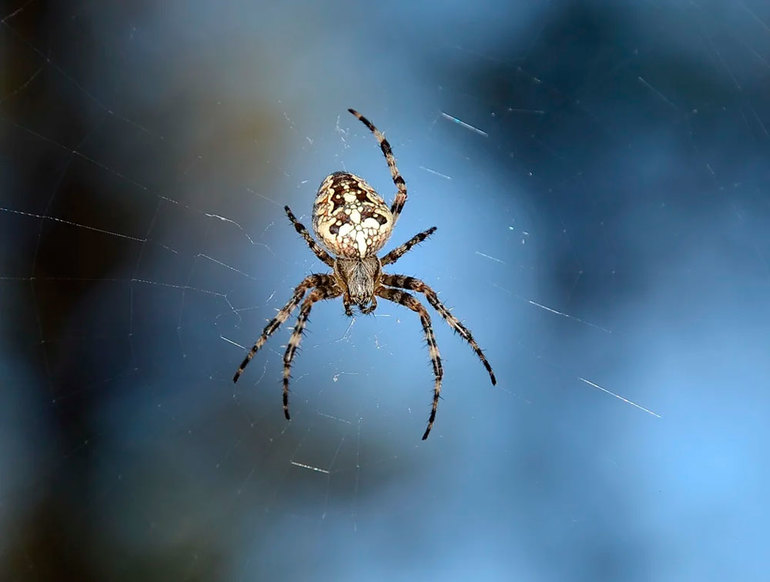
Description, structure and color
In Latin, the spider-cross is called Araneus diadematus. This type of arthropod belongs to the araneomorphic genus. The class is arachnids, the family is roundworms. The body of the godson can take on a variety of colors depending on where the individual settles. In the wild, gray, white, orange and red spiders are often found. Whether a crusader is dangerous for a person does not depend on color. More rare color options:
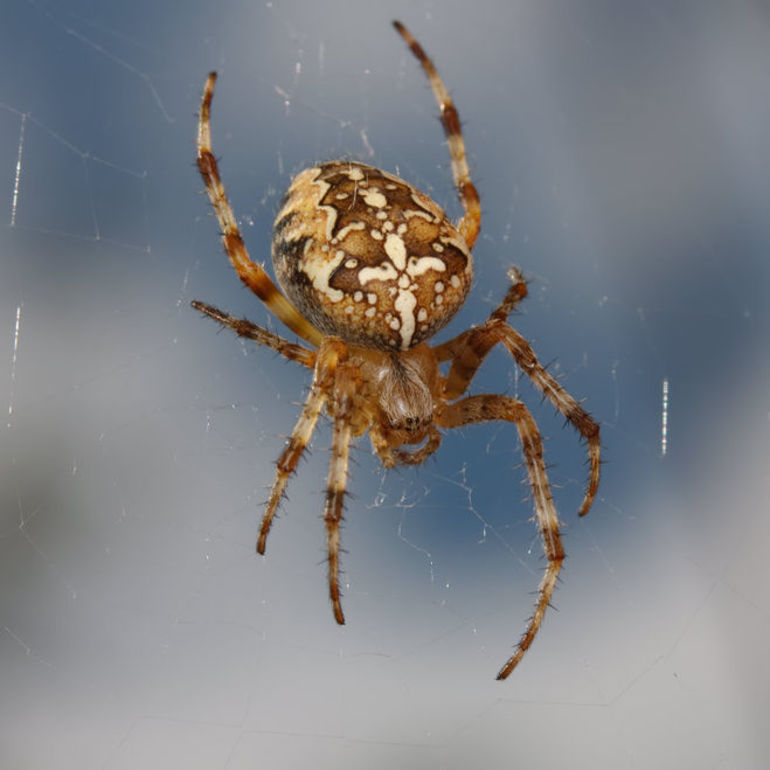
- yellow;
- almost black;
- marble.
On the back of an adult arthropod, you can see a characteristic pattern in the form of several spots that form a picture that looks like a cross. In some species, the figure vaguely resembles a skull, but they are no more dangerous than others.
The following names are common among the people:
- ragwort;
- crusader;
- Chavik pavuk (in the regions bordering Ukraine and Belarus).
Adult spiders prefer to settle on the shores of lakes and the outskirts of flood meadows. They are also found in swamps, along river banks, in forests and in damp lowlands.
A four-spotted figure in the back of the torso of the crusader ordinary can be almost invisible or stand out quite clearly. Bright color - a kind of message to the inhabitants of the forest that they need to stay away. But the bite does not harm large animals, on the contrary: they can inadvertently crush an arthropod. The warning coloring partly helps the spider survive.
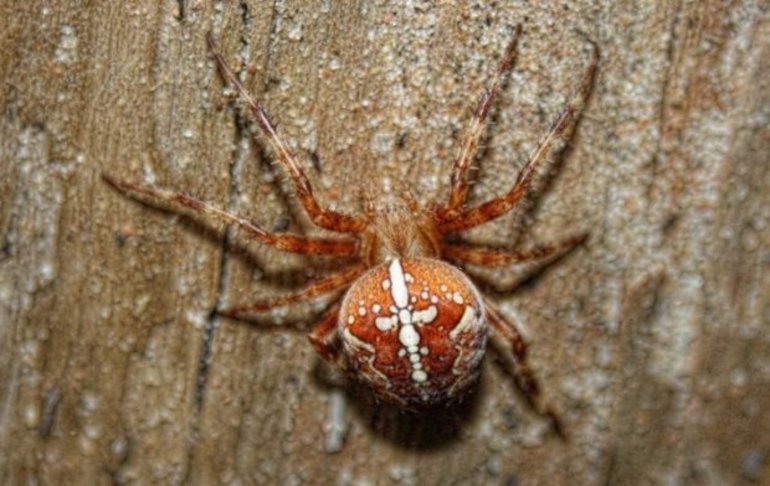
In individuals that live in shady areas of the forest, the back has a dark and saturated hue, and the godchildren living in open and sunlit areas are usually gray or pale brown. The spiders that live among bright plants look most clearly. Coloring helps them to remain invisible against the background of colorful flowers and herbs.
The crusader has many enemies in its natural habitat. Birds willingly eat adult spiders, and some insects lay eggs in the body of arachnids, taking advantage of the fact that arthropods sit motionless during hunting. For example, this is the action of the wood lice fly Melanophora roralis.
The crosses are characterized by different sizes of female and male individuals. Males grow up to 20 mm, females have a body length of not more than 10 mm. There are giants, whose size reaches 26 mm. In the life of the crusader there are several periods when he grows. This happens during molting.accompanied by updating chitinous cover. The old shell is discarded, and in its place a new one is gradually formed.
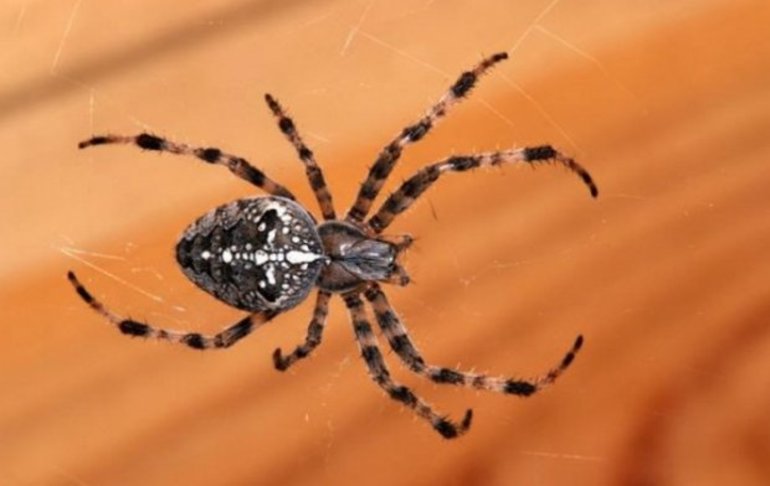
Araneus diadematus has good vision. He distinguishes surrounding space and moving prey with the help of four eyes, which are on the head. Due to the special arrangement of the organs of vision, the spider sees the space in front, on the sides and behind, but it does not distinguish small details, but is able to notice only the contours and movement of objects. This is enough to track prey.
Arthropods with crosses on their backs breathe through the lung sacs. The body of the spider is covered with dense short hairs.They are so sensitive that they pick up the slightest fluctuations in air, so the arachnid is perfectly oriented in space and immediately senses if production moves nearby.
Like all arachnids, this species has 8 symmetrical legs, each of which has claws covered with tiny hairs. The spider is able to move on horizontal and vertical, smooth and rough surfaces.
The cross is mainly active at night, and during the day prefers to hide in foliage or grass, where lovers of forest walks often find it. Due to this feature of behavior, the spider was called the "leaflet". When an adult is sitting motionless, it is difficult to notice against the background of the surrounding vegetation, so you need to walk carefully through the forest.
Habitual diet
Favorite food of the cross spider - small beetles, aphids, wasps, Drosophila and flies. Sometimes bees, dragonflies and even grasshoppers can be found on the net. In marshy places, males and females feed mainly on mosquitoes and dragonflies.
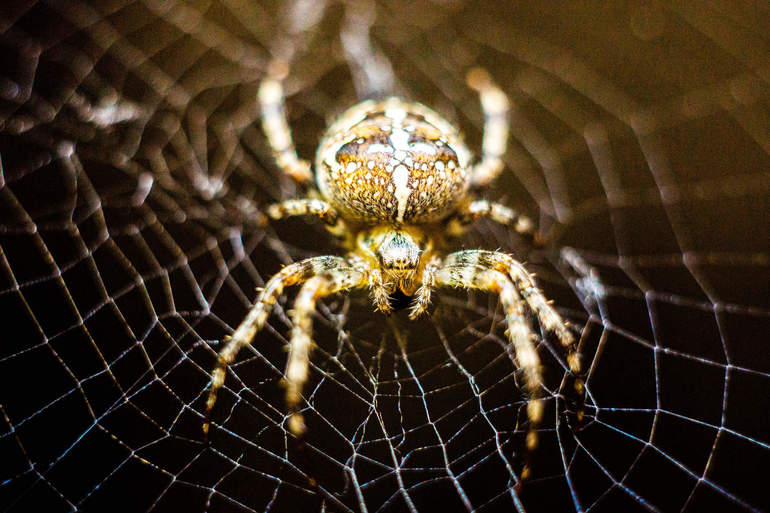
To get food, the crusader weaves hunting nets that can withstand fairly large insects. Some species are dangerous for arthropods because they can lay eggs in its body. If such an insect gets into the net, the cross cuts off the threads so that the prey can be released.
Most of the time, the spider sits in a secluded place where the signal thread is stretched, and waits for the victim to stick to the web. When the insect tries to free itself, the nets begin to oscillate. At this time, the spider approaches its prey sharply., pierces it and injects digestive juice into the body. The insect insides are digested and after some time turn into a semi-liquid substance, which the arachnid sucks out by the oral apparatus.
When it is full, the spider continues to hunt, and kills the following insects and kills cobwebs. The resulting cocoon is stored in a secluded place until the crosspiece feels hunger.
Features of development and reproduction
The crusaders have male and female individuals. For breeding, the male must mate with the female. The mating season in arthropods begins in late summer and lasts for a month. With suitable weather, the crusaders can copulate in early September.
Mating is preceded by preparation. The spider crawls to the web of the female and from it begins to weave a network, stretching it to a secluded place. This is necessary so that after mating the male could run away, otherwise the partner will eat him. When the threads are woven, the spider crawls several times to the future uterus. If she behaves calmly, copulation occurs. After successful fertilization, the instinct forces the spider to flee, until the female has attacked him.
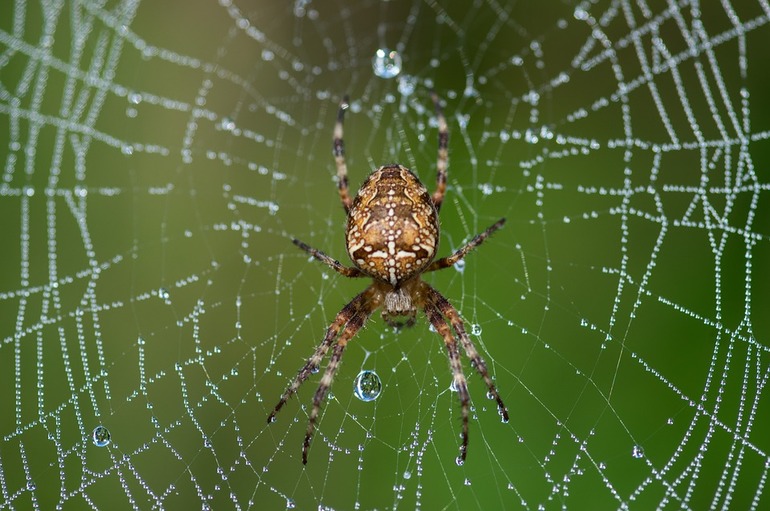
The fertilized uterus weaves a small, dense cocoon from the web into which it lays eggs. She carries the masonry with her or hides it in a place where insects will not find the eggs. During the fall and winter, embryos develop, and in the spring small spiders hatch. The female is with them until the summer.
By the time the offspring becomes independent, the spider usually dies. By the end of summer, young spiders reach puberty, after which they begin the mating season. Thus, the cycle repeats.
Theoretically, the life span of a female and a male is 16-18 months: young spiders are born in early March, and after a year or more, in August - September, their life span is coming to an end. In fact, both male and female individuals die earlier, since in the nature of the cross, there are many enemies. Arthropods, who survived to the cold, pass into the nymph stage and winter in this state.
Crusader Danger
Ignorant people consider the spider cross poisonous, believing that its bite can be harmful. But this type of arthropod is a threat only to small and medium insects.Rodents and other small animals can suffer from an arachnid attack, but poisonous saliva will not cause them serious harm.
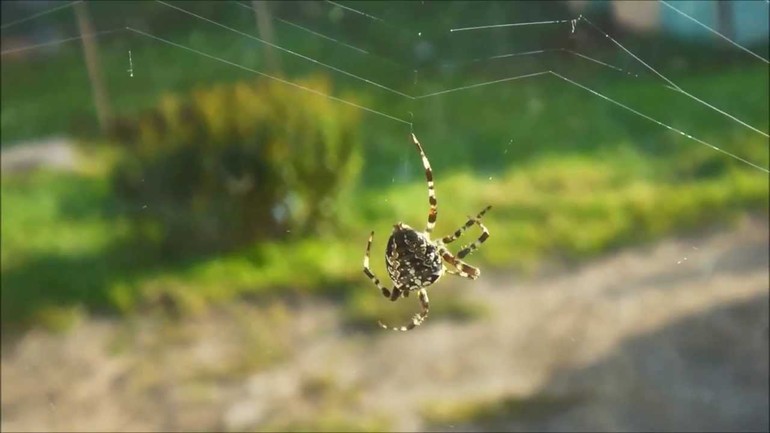
As for people, cattle and horses, often they don’t even feel a bite. Severe itching and burning can begin only if the victim has a tendency to allergic reactions. It is considered normal if the skin at the puncture site itches, turns red and swells slightly, as arthropod saliva contains toxic substances. In most people, unpleasant phenomena disappear in a few minutes.
In total, there are about 2 thousand species of spider-crosses on the planet. 30 species are found in Russian forests, but not one of them poses a threat to humans. All crusaders have similar life cycles, they eat about the same food, and their saliva has a similar effect on the human body. There are common features in the behavior.
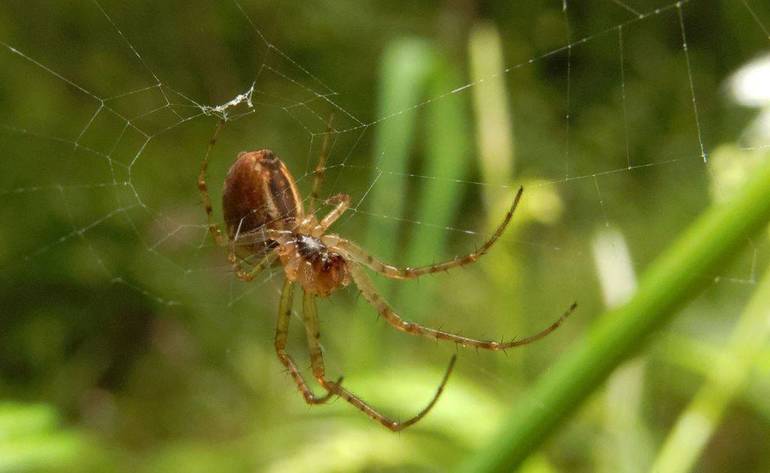
A spider will not attack a person, unless he destroys the web. Instinct tells the cross that large animals and people are not prey. Thus, there is no cause for concern. The exception is a tendency to allergic reactions, but people with such pathologies know that visiting the forest can turn into troubles for them.
A spider with a cross on its back is sometimes confused with another look, which has a distinct skull shape on its body. He has a corresponding name - “dead head”.
Web application
Arachnids with a pattern in the form of a cross on the body are real orderlies in the forest. They eat harmful insects, many of which damage crops and carry dangerous diseases. The web of crosses is also useful because it is used for industrial and scientific purposes. Here's how to use it:
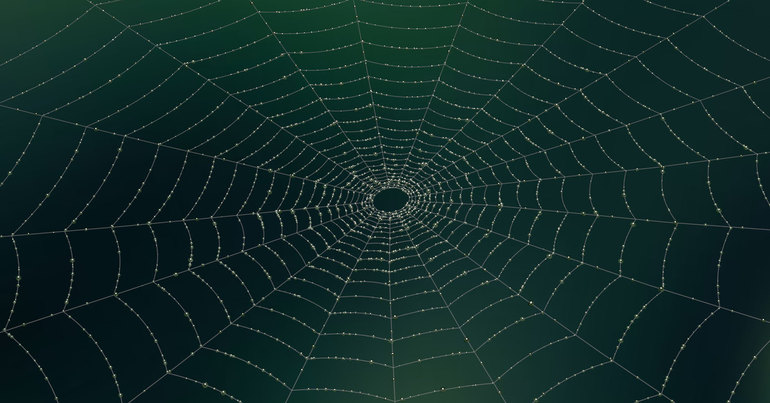
- In microbiology, spider filaments determine the composition and humidity of the atmosphere.
- For the manufacture of measuring instruments of increased accuracy, the fibers that the male produces are used.
- Some peoples use spider webs for the manufacture of decorative products and the production of finest fabrics. From the web weaving gear for fishing, net and net.
Strength is achieved due to the fact that spider yarns are not used separately, but mixed with other fibers, including synthetic ones.
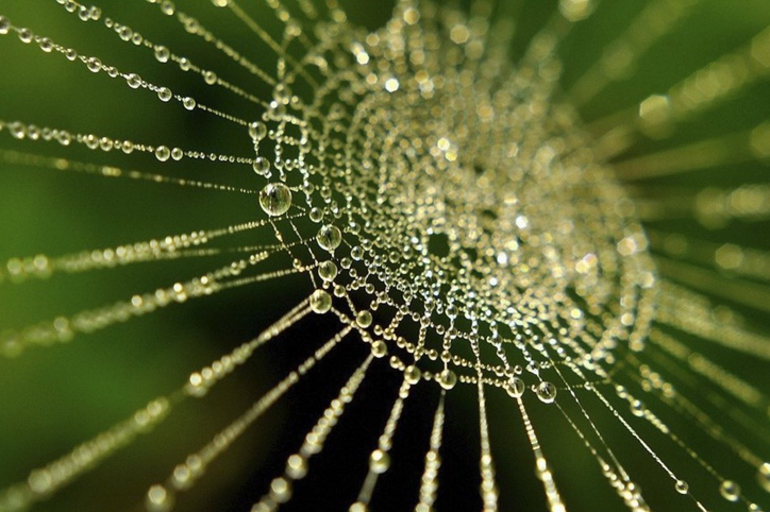
Traditional healers recommend applying a web to fresh scratches and other shallow wounds. The healing properties of the fiber are due to the fact that it has the ability to kill microorganisms. Thanks to disinfection, the wound does not fester and heals faster.
Although the spider is not dangerous, you need to know how to behave if it crawls home or on clothes. It is necessary to take arachnid and carefully release, and always on the street. Having met a spider on a forest path, you do not need to pick it up, it is better to go further. When walking in nature, it is important not to damage the web. First, inaccurate movement can trigger an arthropod attack. Secondly, the destruction of spider webs will lead to the fact that the cross will be hungry for some time.
Bite Actions
Even taking precautions, you can accidentally tear the web. A spider that sits nearby in a secluded place can lash out. If this happens, you need to monitor your well-being. Symptoms that should alert:

- headache;
- general malaise;
- weakness;
- heat;
- soreness at the site of the bite;
- slight burning sensation;
- itching, redness, swelling.
All these signs indicate that a person has an increased sensitivity to toxic substances contained in arachnid saliva. But if within 5 minutes the condition has not worsened, then you can no longer fear the consequences. It is impossible to die and even lose consciousness from the bite of a spider-cross.
Just in case, you can do the following:

- take an antihistamine;
- drink antipyretic syrup (depending on symptoms);
- apply dry ice or a napkin dipped in cold water to the problem area;
- rinse a bitten place under a stream of cold water.
If the condition worsens, you need to contact a medical assistant or local doctor.
Recommendations for tourists
Although the bite of a spider does not entail serious consequences, it is accompanied by unpleasant sensations. Going for a walk in the forest, on a river or meadow, you need to dress properly so that in case of attack the spider could not get to the skin. Clothing and shoes are preferably closed. The head should be protected with a scarf or cap. During the walk, do not destroy the cobwebs, catch spiders or crush them.
When settling down for the night, you need to check the tent: not only harmless arthropods, but also poisonous insects can appear inside. Clothing must be carefully inspected, including from the inside, and shoes should be shaken out. Females often hide in folds of bedding and outerwear, crawl into bags and shoes.
The discovered web should not be touched, especially if a spider sits there. The probability of being bitten is small, but there is one, so it is better to play it safe than to suffer from negligence.
- How to choose a vacuum cleaner taking into account the characteristics of the house and coatings?
- What to look for when choosing a water delivery
- How to quickly create comfort at home - tips for housewives
- How to choose the perfect TV - useful tips
- What to look for when choosing blinds
- What should be running shoes?
- What useful things can you buy in a hardware store
- Iphone 11 pro max review
- Than iPhone is better than Android smartphones



